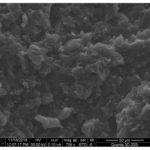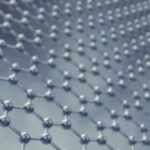Novel fibre-reinforced composites are becoming increasingly important as stable and lightweight materials. For example, carbon fibre reinforced polymers (CFRP), are used in aircraft construction or in the construction of Formula 1 racing cars and sports bicycles. The properties of these materials depend mostly on how the tiny fibres are aligned and how they are arranged and embedded in the surrounding material, influencing the mechanical, optical, or electromagnetic behaviour of the composites.
To investigate the fibre’s orientation in such composites, researchers must look inside them. One could use small angle X-ray scattering (SAXS), exploiting the fact that X-rays are scattered when they penetrate matter. The resulting scattering pattern can then be used to obtain information about the interior of a sample and potentially the orientation of the fibres. However, the common SAXS methods have the disadvantage of being quite slow: it can take up to several hours to scan centimeter-sized specimens with the required resolution.
Observing the knotting of a carbon fibre ribbon
Researchers at the Paul Scherrer Institute (PSI) and ETH Zürich, together with colleagues from EPF Lausanne and the Danish spin-off company Xnovo Technology, have now succeeded in further developing the technology for practical applications. “The decisive factor was that we installed an array of X-ray lenses behind the sample. This makes it possible to detect multiple local scattering patterns that reflect the spatial inner structure of a sample with only one X-ray shot, enabling us to take a large number of consecutive images,” says Matias Kagias, the inventor of the method and a postdoctoral researcher in the PSI X-ray tomography group headed by Marco Stampanoni. As a proof of principle, the researchers used the new method to display fibres’ orientation in a carbon fibre ribbon during the knotting process. They acquired time-resolved X-ray projections at a rate of 25 images per second over a period of 11 seconds.
Applications in medicine and security are conceivable
The new method works not only with X-rays from synchrotron facilities such as the Swiss Light Source (SLS), but also with beams from conventional X-ray tubes. Therefore, says Prof. Marco Stampanoni, “it is expected that this novel approach will find practical applications in medical devices and non-destructive testing as well as the area of homeland security.”
The researchers have published their results in the journal Nature Communications.

Source: Paul Scherrer Institute












